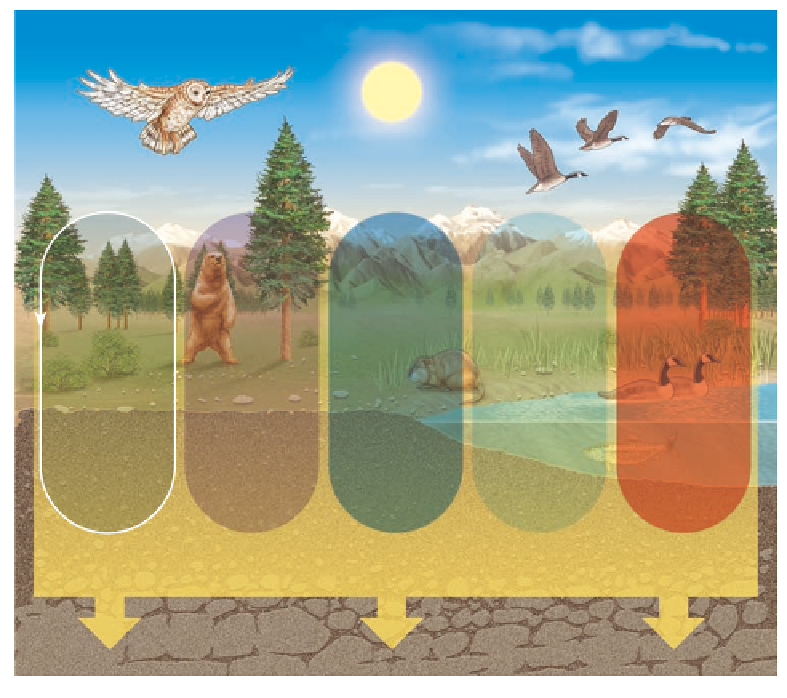Environmental Engineering Reference
In-Depth Information
Active Figure 3-6
Natural capital:
life on the earth depends on the
one-
way flow of energy
(wavy arrows)
from the sun through the biosphere,
the
cycling of crucial elements
(solid
lines around ovals), and
gravity,
which keeps atmospheric gases
from escaping into space and en-
ables chemicals to move through
the matter cycles. This simplified
model depicts only a few of the many
cycling elements.
See an animation
based on this figure and take a short
quiz on the concept.
Biosphere
Carbon
cycle
Phosphorus
cycle
Nitrogen
cycle
Water
cycle
Oxygen
cycle
Heat in the environment
Heat
Heat
Heat
All parts of the biosphere are interconnected,
just as
the parts of your body are connected
.
Any change in
one of the biosphere's components or processes can
have a ripple effect on other parts. If the earth were an
apple, the biosphere would be no thicker than the ap-
ple's skin.
The goal of ecology is to understand the interac-
tions in this thin, life-supporting global skin or membrane of
air, water, soil, and organisms.
through parts of the biosphere. Because the earth is
closed to significant inputs of matter from space, its
essentially fixed supply of nutrients must be continu-
ally recycled to support life. All nutrient trips in
ecosystems are round-trips.
■
Gravity,
which allows the planet to hold on to its
atmosphere and enables the movement of chemicals
between the air, water, soil, and organisms in the mat-
ter cycles.
What Sustains Life on Earth?
Solar energy, the cycling of matter, and gravity sustain
the earth's life.
Life on the earth depends on three interconnected fac-
tors (Figure 3-6):
What Happens to Solar Energy Reaching
the Earth?
Solar energy flowing through the biosphere warms
the atmosphere, evaporates and recycles water,
generates winds, and supports plant growth.
About one-billionth of the sun's output of energy
reaches the earth—a tiny sphere in the vastness of
space—in the form of electromagnetic waves, mostly
as visible light (Figure 2-9, p. 30). Much of this energy
is either reflected away or absorbed by chemicals in
the planet's atmosphere (Figure 3-7, p. 40).
Most solar radiation making it through the at-
mosphere is degraded into longer-wavelength infra-
red radiation. This infrared radiation encounters the
■
The
one-way flow of high-quality energy
from the sun
through materials and living things in their feeding
interactions, into the environment as low-quality en-
ergy (mostly heat dispersed into air or water mole-
cules at a low temperature), and eventually back into
space as heat. No round-trips are allowed because en-
ergy cannot be recycled.
■
The
cycling of matter
(the atoms, ions, or com-
pounds needed for survival by living organisms)
















